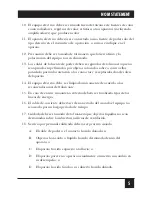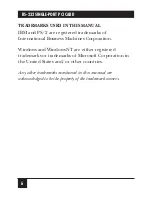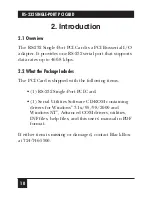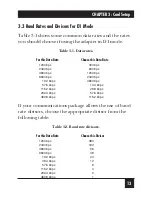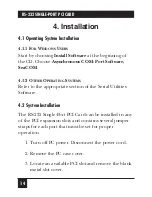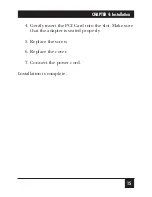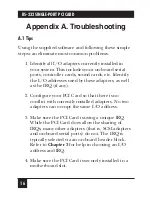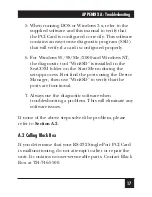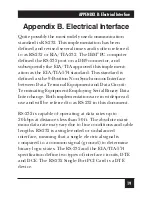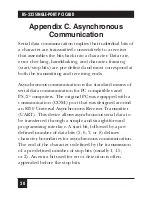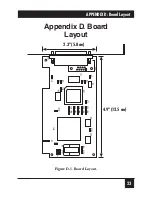
19
APPENDIX B: Electrical Interface
Appendix B. Electrical Interface
Quite possibly the most widely used communication
standard is RS-232. This implementation has been
defined and revised several times and is often referred
to as RS-232 or EIA/TIA-232. The IBM
®
PC computer
defined the RS-232 port on a DB9 connector, and
subsequently the EIA/TIA approved this implement-
ation as the EIA/TIA-574 standard. This standard is
defined as the 9-Position Non-Synchronous Interface
between Data Terminal Equipment and Data Circuit-
Terminating Equipment Employing Serial Binary Data
Interchange. Both implementations are in widespread
use and will be referred to as RS-232 in this document.
RS-232 is capable of operating at data rates up to
20 kbps at distances less than 50 ft. The absolute maxi-
mum data rate may vary due to line conditions and cable
lengths. RS-232 is a single-ended or unbalanced
interface, meaning that a single electrical signal is
compared to a common signal (ground) to determine
binary logic states. The RS-232 and the EIA/TIA-574
specification define two types of interface circuits, DTE
and DCE. The RS-232 Single-Port PCI Card is a DTE
device.

